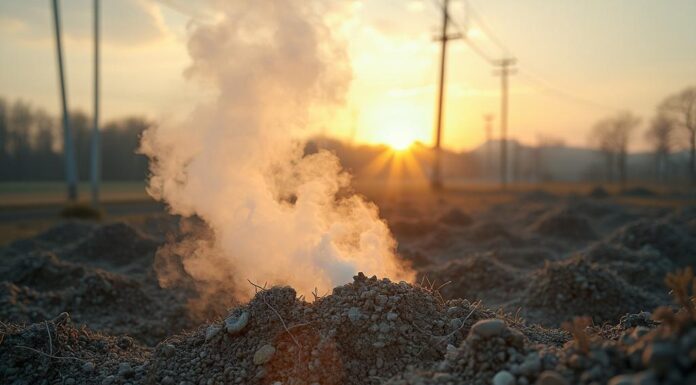Unraveling the Complex World of Carbon Capture
The urgent quest for climate solutions has thrust carbon capture and storage (CCS) technologies into the spotlight, promising to curb greenhouse gases and inch closer to net-zero targets. As environmental challenges mount, these technologies—from Direct Air Capture (DAC) to point-source CCS—are touted both as indispensable tools and criticized as mere lifelines for the fossil fuel industry. This article dives deep into the nuances, exploring if CCS truly paves a pathway for a sustainable future or simply masks continued ecological degradation.
Exploring Groundbreaking Carbon Capture Technologies
Recent advancements have significantly shaped the landscape of carbon capture technologies, hinting at potential shifts in energy consumption and environmental impacts. A study by the University of Edinburgh reveals a non-aqueous absorbent that slashes energy demands for capturing CO2 to about 2 kJ/g CO₂—nearly half the energy required by traditional methods[1]. Simultaneously, MIT’s introduction of nanoscale filtering membranes promises to boost electrochemical carbon capture efficiency by sixfold, reducing costs by over 20%[2]. These groundbreaking developments suggest a growing efficacy and affordability in capturing atmospheric CO₂.
The Debate: Efficacy Versus Environmental Impact
Despite technological strides, CCS garners skepticism over its environmental implications and actual effectiveness in combatting climate change. Critics argue that reliance on CCS could perpetuate fossil fuel usage, especially when captured CO2 is utilized for enhanced oil recovery, paradoxically increasing carbon emissions[6]. Moreover, the significant energy and water demands of large-scale CCS implementations raise concerns about their sustainability and potential strain on natural resources.
Expert Perspectives on Carbon Capture
The dialogue among experts reflects a divide. Proponents cite CCS’s indispensability for reducing hard-to-abate industrial emissions like those from cement manufacturing. Detractors urge a focus on more immediate and less technologically complex strategies such as demand reduction and energy efficiency[6]. For example, Stanford researchers advocate leveraging natural processes such as enhanced mineral carbonation for sequestering CO₂, which could also yield agricultural benefits by improving soil health[3].
Economic Aspects and Policy Implications
The economic landscape of CCS features hefty investments and substantial subsidies which have been critical in accelerating deployment. Yet, there exists a strong argument highlighting that such financial inflows predominantly benefit large fossil fuel conglomerates, potentially at the expense of broader environmental gains. The need for robust regulatory frameworks and transparent monitoring mechanisms is crucial to ensure that CCS technologies contribute effectively to climate goals without undue commercial influences.
Looking Ahead: Sustainable Practices and Future Innovations
Emerging trends indicate both challenges and opportunities ahead. Innovations aimed at reducing costs and enhancing efficiency are on the rise; however, realizing these advancements requires overcoming significant technical and regulatory hurdles. Additionally, integrating degrowth principles could shift focus towards reducing consumption patterns fundamentally, potentially diminishing the role of high-tech solutions like CCS in favor of simpler, community-driven initiatives.
As advancements continue to unfold, the complex narrative surrounding carbon capture technologies remains peppered with critical questions about their viability and integrity as long-term climate solutions. The path forward demands a balanced approach—leveraging technological innovations while ensuring they do not overshadow essential reductions in global carbon footprints.
KEY FIGURES
- A novel non-aqueous absorbent system developed by researchers reduces energy consumption for CO₂ capture to about 2 kJ/g CO₂, significantly lower than the 3.84 kJ/g CO₂ required by traditional MEA solutions[1].
- Electrochemical carbon capture efficiency can be improved sixfold and costs reduced by at least 20% using nanoscale filtering membranes, according to MIT research[2].
- Carbonation of calcium silicate and magnesium oxide minerals can capture CO₂ thousands of times faster than natural weathering processes, enabling industrial-scale direct air capture (DAC)[3].
RECENT NEWS
- (2025-01-16) Researchers from the University of Edinburgh and others reported a breakthrough in carbon capture efficiency using a novel non-aqueous absorbent, which lowers energy use and facilitates easier CO₂ release[1].
- (2025-05-20) MIT unveiled a new electrochemical carbon capture process that addresses a key bottleneck by balancing CO₂ uptake and release, potentially enabling gigaton-scale capture at lower costs[2].
- (2025-02-19) Stanford researchers developed a low-cost method to accelerate CO₂ sequestration by treating common minerals with heat, with potential applications in agriculture and large-scale carbon removal[3].
- (2025-04-03) Northwestern University scientists demonstrated scalable and affordable moisture-swing DAC materials based on abundant carbonaceous and metal oxide nanomaterials, offering a low-energy alternative to current polymer resins[4][5].
STUDIES AND REPORTS
- Study on non-aqueous absorbents (University of Edinburgh et al.): Demonstrated a weak CO₂-absorbent interaction enabling efficient regeneration at mild temperatures, setting a new benchmark for next-generation CO₂ capture materials with lower energy demands[1].
- MIT electrochemical CO₂ capture study (ACS Energy Letters, 2025): Identified nanoscale filtering membranes as a simple intermediate step that improves both capture and release phases, increasing efficiency and reducing costs by 20% or more, critical for scaling to gigaton volumes[2].
- Stanford mineral carbonation study (Nature, 2025): Showed that heat-treated calcium silicate and magnesium oxide can rapidly and permanently trap atmospheric CO₂, with potential co-benefits for soil health and crop yields, suggesting scalable negative emissions pathways[3].
- Northwestern study on moisture-swing DAC (2025): Highlighted aluminum oxide and activated carbon for fastest CO₂ capture kinetics and iron oxide and nanostructured graphite for greatest capacity, proposing sustainable materials that cut costs and energy compared to traditional sorbents[4][5].
TECHNOLOGICAL DEVELOPMENTS
- Non-aqueous absorbents: New solvent systems reduce energy consumption and enable CO₂ desorption at 343–353 K, improving capture efficiency and reducing costs compared to MEA-based capture[1].
- Nanoscale filtering membranes for electrochemical capture: Enhance cyclical capture and release efficiency, enabling scalable direct air capture or point-source capture with lower energy input and costs[2].
- Heat-activated mineral carbonation: Converts abundant minerals into carbon-trapping materials that can be deployed on land or in agricultural soils for permanent CO₂ sequestration, with additional agronomic benefits[3].
- Moisture-swing direct air capture materials: Use humidity changes to capture and release CO₂ with low energy input, utilizing abundant, inexpensive materials like activated carbon and metal oxides rather than costly ion exchange resins[4][5].
MAIN SOURCES
- https://www.spectroscopyonline.com/view/revolutionizing-carbon-capture-a-novel-non-aqueous-absorbent-offers-breakthrough-efficiency — Breakthrough in low-energy CO₂ capture solvents (2025).
- https://news.mit.edu/2025/solving-bottleneck-co2-capture-and-conversion-0520 — Electrochemical capture efficiency advancements at MIT (2025).
- https://news.stanford.edu/stories/2025/02/new-process-gets-common-rocks-to-trap-carbon-rapidly-cheaply — Scalable mineral carbonation for CO₂ sequestration (2025).
- https://news.northwestern.edu/stories/2025/04/carbon-capture-affordable-materials/ — Development of scalable, affordable moisture-swing DAC materials (2025).
- https://www.mccormick.northwestern.edu/news/articles/2025/04/carbon-capture-could-become-practical-with-scalable-affordable-materials/ — Further details on low-cost DAC materials (2025).
Additional Context on Criticism and Debate:
- While carbon capture technologies show promising innovations, many experts caution that CCS often serves as a lifeline for fossil fuel industries by enabling continued extraction and use, especially when CO₂ is used for enhanced oil recovery (EOR), which paradoxically results in more fossil fuel emissions.
- CCS has significant energy and water demands, risks of solvent pollution, and potential leakage from storage sites, raising concerns about its net climate benefit.
- Independent experts urge prioritizing demand reduction, energy efficiency, electrification, and sustainable transport as cheaper, proven emission reduction strategies rather than relying heavily on CCS.
- Limited, tightly regulated CCS applications may be appropriate for hard-to-abate industrial emissions such as cement manufacturing, but large-scale reliance risks delaying necessary systemic decarbonization.
- Recent policy debates emphasize the need for transparent monitoring, verification, and avoiding CCS subsidies that disproportionately benefit fossil fuel companies.
This synthesis integrates the latest technological advances with critical perspectives, providing a nuanced view of carbon capture’s role in climate solutions versus potential fossil fuel greenwashing.
Other references:
spectroscopyonline.com – Revolutionizing Carbon Capture: A Novel Non-Aqueous …
news.mit.edu – How to solve a bottleneck for CO2 capture and conversion
news.stanford.edu – Scientists discover low-cost way to trap carbon using common …
news.northwestern.edu – Carbon capture could become practical with these scalable …
mccormick.northwestern.edu – Carbon Capture Could Become Practical with Scalable …
iea.org – Source
cbo.gov – Source
iea.org – Source
bgs.ac.uk – Source
netl.doe.gov – Source
earthjustice.org – Source
c2es.org – Source
openpr.com – Source
latrobevalleyexpress.com.au – Source
innovationnewsnetwork.com – Source
azocleantech.com – Source
briandcolwell.com – Source
carbonherald.com – Source
nortonrosefulbright.com – Source
x.com – Source
x.com – Source
x.com – Source
x.com – Source
x.com – Source
x.com – Source



